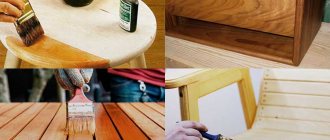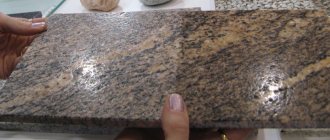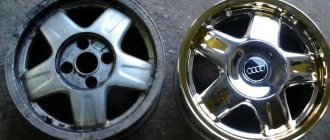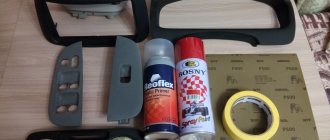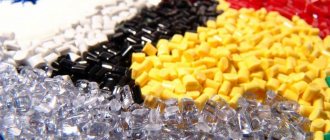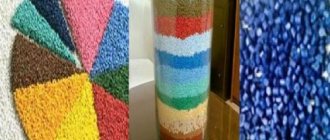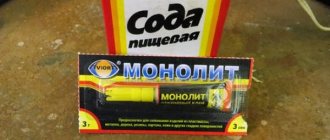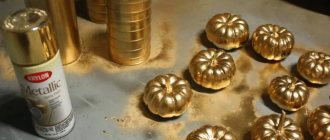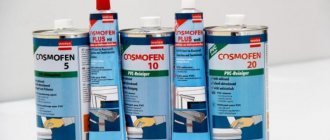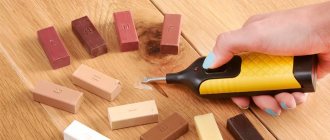Description and technical specifications
Liquid plastic is a one-component transparent polymer with low viscosity. It has the properties of diffuse welding, almost instantly connects elements, creating a strong monolithic seam, almost invisible during external inspection. The frozen mass has the following characteristics:
- resistance to temperature changes;
- low heat conductivity;
- resistance to aggressive environmental influences;
- UV resistance;
- high strength;
- environmental friendliness;
- safety;
- long-term color retention.
In terms of composition, it is liquid plastic, which, penetrating into the structure of the parts being connected, after polymerization forms a monolithic connection with an even, dense structure.
After application, the mixture sets in 2-4 minutes, and complete hardening, providing maximum strength, occurs within a day.
Characteristics
The main characteristics of polymer paints include the following:
- It takes about an hour to dry one layer. The time depends on the thickness of the layer and the conditions under which painting was carried out.
- The standard consumption of the substance per square meter is more than 200 grams (if you use a special pneumatic sprayer).
- The stability of the film under static exposure to liquid is slightly less than two days at temperature conditions of +20 degrees Celsius.
- The portion of non-volatile components in the paint is less than 23%. If necessary, the paint can be thinned.
Scope and limitations
Plastic polymer can replace most adhesives. The substance perfectly connects:
- plexiglass;
- polycarbonate;
- polyvinyl chloride;
- plastic;
- rigid PVC with seals and aluminum profile;
- polystyrene;
- polyethylene terephthalate glycol.
Some varieties of the product are suitable for bonding leather, glass, rubber, metal or ceramics.
More often, liquid plastic glue is used for PVC panels, when installing slopes, sealing seams, securing flashings and other window elements.
Despite its versatility, this series of adhesives has some limitations in use. It is not advisable to glue:
- Parts that will be in constant contact with water. The adhesive formula is not suitable for regular exposure to water.
- Porous materials, such as foam baseboards. The structure of foam plastic or other similar bases does not allow for high-quality diffuse welding. If you need to glue porous substrates, then before doing this they need to be treated with a special impregnation.
- Parts with different thermal expansion. If the thermal expansion of the elements being glued differs from the parameters of the glue, then over time the liquid plastic may peel off.
- Polypropylene. The material has low chemical inertness, so the adhesive does not provide full diffusion. During operation, the strength of the seams may decrease.
- Metal. Metal parts must have a plastic coating, otherwise the polymer will peel off.
If plastic connections are needed, then the product is not suitable. The adhesive composition is intended for making hard technical seams.
What is liquid plastic for windows and how to use it
In recent years, more and more owners of houses and apartments prefer to install plastic windows instead of wooden ones. They use liquid plastic for PVC windows - a highly specialized adhesive-sealant. It is most often used when it is necessary to eliminate gaps between slopes and window blocks, as well as any other parts made of plastic.
Where else is it used Liquid plastic is a good choice if you need to do some plumbing work, for example, gluing rain gutters or PVC pipes. Quite often it is used by professionals in the manufacture of billboards.
Types and approximate prices in Moscow
Despite the fact that plastic sealant was created relatively recently, the building materials market offers many varieties of polymer mixtures. They differ only slightly in additional characteristics.
Liquid glue Cosmofen
Adhesive for plastic windows Cosmofen is made on the basis of dissolved white PVC glue. Strongly connects parts when installing windows, increases thermal insulation. The Weiss company produces a line of Cosmofen liquid plastic mixtures for windows. Popular brands of sealants:
- Cocmofen 345. Used for sealing elements on rigid polyvinyl chloride. Cosmo PVC adhesive forms a compound that is resistant to aging.
- Cosmofen Plus. A quick-setting white mixture is used for fastening PVC window parts. Durable, easy to apply.
Liquid plastic glue Cosmofen Plus white 200 g costs from 270 rubles, and Cocmofen 345 – from 420 rubles.
Adhesive-sealant Masterteks
White polymer, weather resistant, universal. The adhesive sealant creates a strong monolithic connection.
Mastertex liquid plastic is available in tubes of 230 g. The cost of the product is from 300 rubles.
Lazer Bond
Lazer Bond liquid plastic glue liquid resin holds the bases together in 3 seconds. The kit includes an ultraviolet lamp, under the light of which the glue cures. Can be used when installing windows, for connecting parts made of metal, copper, leather or PVC. Laser Bond costs from 290 rubles. for 60 years
5 Second Fix
The manufacturer claims that 5 Second Fix liquid adhesive plastic connects any materials, including metal or combined substrates. Polymerization occurs in 5 seconds under the influence of an ultraviolet lamp, sold complete with glue. After hardening, the seam can be sanded or painted without compromising strength. The price of the product is from 490 rubles.
Nano glue liquid plastic
The packaging states that this is a super-strong plastic adhesive that can withstand loads of up to 160 kg. Nano plastic hardens under the influence of UV radiation from a light bulb, which is included in the kit. Does not leave stains and does not stick to your hands.
A device with a mixture dispenser and a built-in UV lamp is sold at a price starting from 1999 rubles.
GreenteQ PVC glue
Designed for fastening parts made of solid PVC. Heat-resistant, immune to ultraviolet radiation.
Used in the window industry or for plumbing installation.
Costs from 250 rubles.
Bondic
The package is a miniature welding tool with a UV emitter. The fill with a transparent base polymerizes only under the influence of ultraviolet radiation, becoming an almost eternal sealant. Glues any materials. Costs from 2000 rub.
What is enamel liquid plastic for?
But liquid plastic is not always glue. Plastic primers or paints are also available, for example:
- enamel primer PS-160;
- enamel Dufa Kunststoff Flussig.
A polymer mixture that combines the qualities of enamel and primer is needed for painting in a humid or aggressive atmospheric environment.
Not suitable for gluing elements or filling cracks.
Advantages and disadvantages of liquid plastic glue
Like any product, plastic glue has advantages and disadvantages. The advantages of the composition include:
- environmental friendliness;
- no color changes under the influence of external factors;
- hermetic filling of cracks and joints;
- greater strength after hardening due to diffuse welding (a monolithic part is formed);
- smoothing out all irregularities and gaps;
- resistance to sunlight;
- the ability to use household chemicals to care for glued surfaces;
- protection against fungus or mold.
Liquid glue for plastic has few disadvantages:
- Fast polymerization. You need to have time to distribute the product and combine the selected elements in a minute. A long delay causes the mixture to turn into a film and it is impossible to form a seam.
- Presence of toxic compounds. While the dried polymer is environmentally friendly and safe, the liquid composition has a strong, unpleasant odor that causes headaches or breathing problems. You have to work in a respirator in rooms with good ventilation.
- Inability to seal in areas frequently in contact with water.
A relative disadvantage is incomplete versatility. The glue is not suitable for creating elastic seams; it does not bond porous materials well without the additional use of special impregnations.
Pros and cons of using Cosmofen glue
Despite its short existence on the liquid plastic market, Cosmofen has confidently established itself as one of the best.
Its main advantage is that the composition contains the same components as in PVC materials, this allows it to differ from the profile neither in color nor in structure.
The main advantages of the brand:
- resistance to moisture, ultraviolet radiation and temperature fluctuations;
- not susceptible to the formation of fungus and mold;
- reliability and strength of seams;
- environmentally friendly and harmless;
- the color does not change even after 15 years;
- rapid hardening of seams;
- excellent sealant;
- does not absorb foreign odors;
- You can use various cleaning products.
A significant drawback is the rapid adhesion of parts, due to which it is impossible to correct errors.
Another list of disadvantages includes flammability, difficult to wipe off from some surfaces, does not adhere to loose surfaces, cannot be used for flexible seams, must be kept dry until completely hardened.
Technology of use
You can't glue it right away. First you need to prepare the grounds:
- remove contaminants;
- dry;
- degrease;
- wipe with a lint-free cloth (remaining lint on the base will interfere with adhesion).
As a degreaser, it is better to use a product of the same brand as the glue.
Sometimes craftsmen use acetone for degreasing. The solvent prepares substrates well, but is not suitable for all materials (some are destroyed when interacting with the acetone component).
After degreasing and drying, you can begin applying the polymer. Algorithm of work using the example of sealing seams of plastic windows:
- squeeze out a thin strip of product from the tube along the entire length of the gap (do not smear the material);
- Now wait fifteen minutes until it hardens.
Sealing of joints or gaps is completed.
When finishing slopes, gluing of parts will be required. Then, after distributing the glue over the base, you need to apply the element and hold it for a while. Then you will need to wait for the composition to dry.
Instructions for using liquid plastic
• The required amount of glue is squeezed out of the tube onto the junction of the elements and distributed in a thin layer.
• To distribute the composition over the surface, it is better to use rubber gloves soaked in acetone.
• There is no need to rub liquid plastic into the joint. The composition is applied in small strips of 30 cm to prevent hardening of part of the seam. When applying water-based plastic, use a brush, roller or spray gun. The glue dries within 15 minutes.
• Before work, wear a protective mask to avoid inhaling sealant vapors. If you have allergic reactions, you should avoid working with this material.
If you have no experience working with such compounds, it is better to practice on waste from the installation of window sills before starting work.
Precautionary measures
Plastic window adhesive contains cyanoacrylate. It is a harmful chemical that becomes inactive after polymerization. When working with polymer, you must follow safety precautions:
- carry out gluing in special clothing (gloves, respirator, goggles);
- provide ventilation of the premises during polymerization;
- Do not use plastic sealant near open fire (contains flammable substances).
People prone to allergies or suffering from chronic lung diseases should not work with polymerizing plastic mixtures.
Expert advice
Working with polymer sealant is not difficult, but beginners encounter minor flaws that affect the quality of the result. Here are some professional tips to avoid this:
- Speed and attentiveness. The application site must be selected in advance, and then the required amount of mass must be squeezed out of the tube.
- Avoid foamed surfaces. After the foam subsides, the frozen plastic becomes deformed.
- Don't rush into exploitation. Hardening occurs after 15-20 minutes, but the diffuse welding is not yet strong. You can use the fastened structure no sooner than after 24 hours.
Using a plastic composition, you can make window slopes or repair household items.
Liquid plastic is almost universal and provides instant fixation. The product is moisture-resistant, durable and does not lose color under the influence of the sun.
Blitz tips
- The length of the seam should be no more than 50 cm, otherwise the beginning will begin to dry out.
- Keep in mind that as the plastic hardens, the volume of the plastic shrinks and the seam will become more retracted.
- If you use cleaning wipes, choose ones without external lint, as it may remain on the surface.
- Carry out all work with gloves to avoid contact of harmful substances with your skin.
- During operation, the humidity in the room should be within 60%, and the temperature should not be higher than +20°C, but not lower than +5°C
